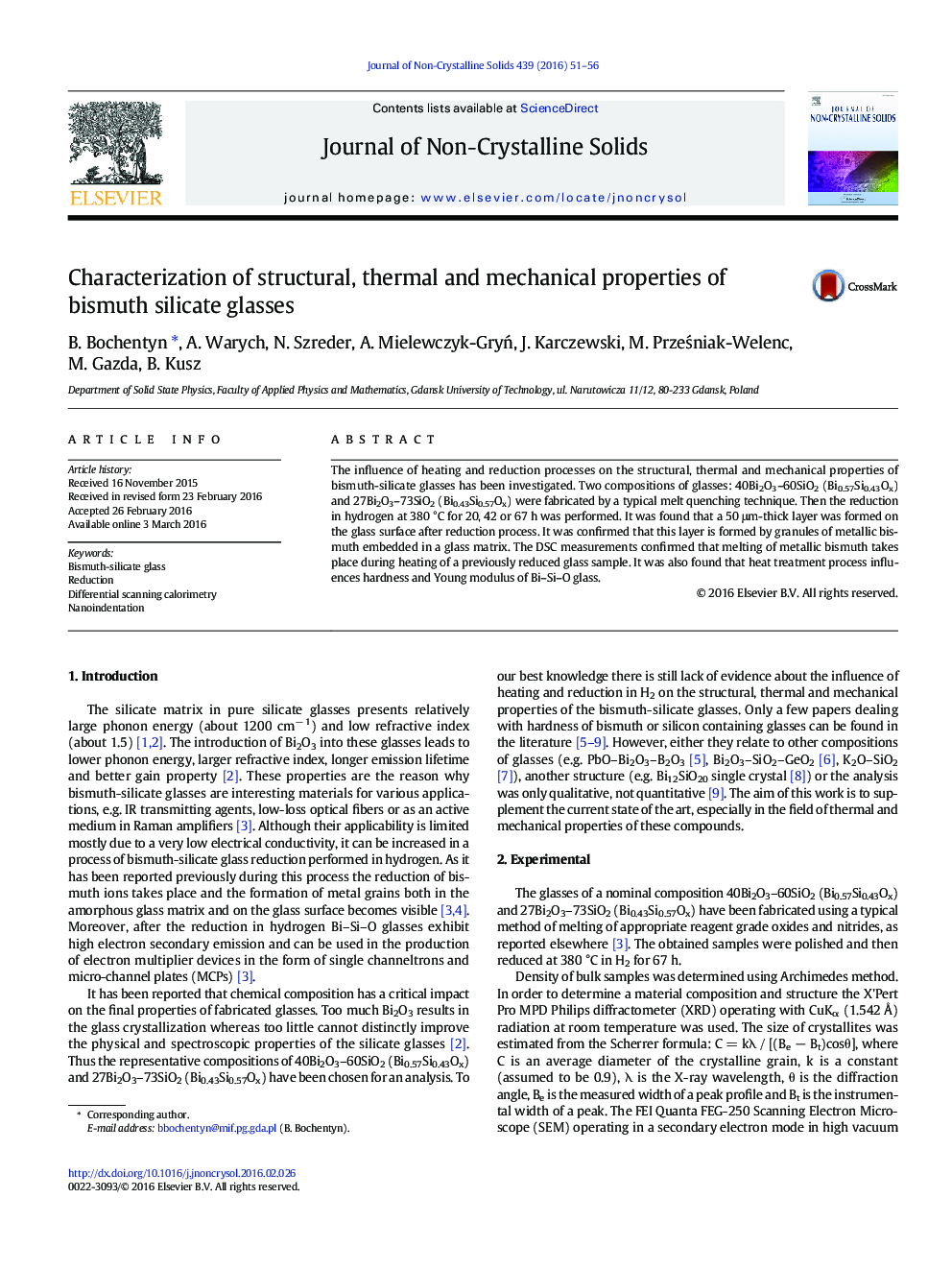| Article ID | Journal | Published Year | Pages | File Type |
|---|---|---|---|---|
| 1480335 | Journal of Non-Crystalline Solids | 2016 | 6 Pages |
•Reduction in hydrogen leads to formation of layer on the glass surface.•Layer is formed by granules of metallic bismuth embedded in a glass matrix.•Metallic bismuth melts during heating of a previously reduced glass sample.•Reduction in hydrogen prevents the glass softening.
The influence of heating and reduction processes on the structural, thermal and mechanical properties of bismuth-silicate glasses has been investigated. Two compositions of glasses: 40Bi2O3–60SiO2 (Bi0.57Si0.43Ox) and 27Bi2O3–73SiO2 (Bi0.43Si0.57Ox) were fabricated by a typical melt quenching technique. Then the reduction in hydrogen at 380 °C for 20, 42 or 67 h was performed. It was found that a 50 μm-thick layer was formed on the glass surface after reduction process. It was confirmed that this layer is formed by granules of metallic bismuth embedded in a glass matrix. The DSC measurements confirmed that melting of metallic bismuth takes place during heating of a previously reduced glass sample. It was also found that heat treatment process influences hardness and Young modulus of Bi–Si–O glass.
